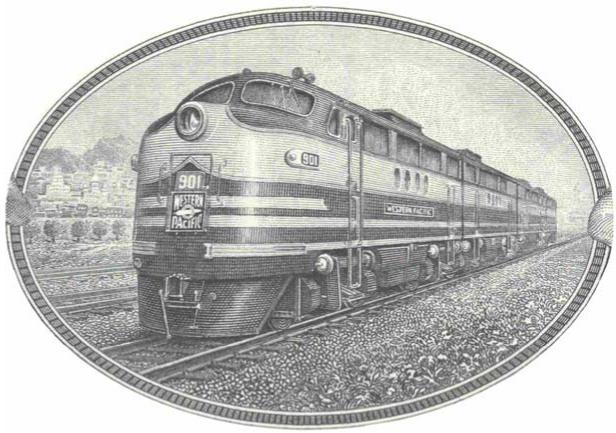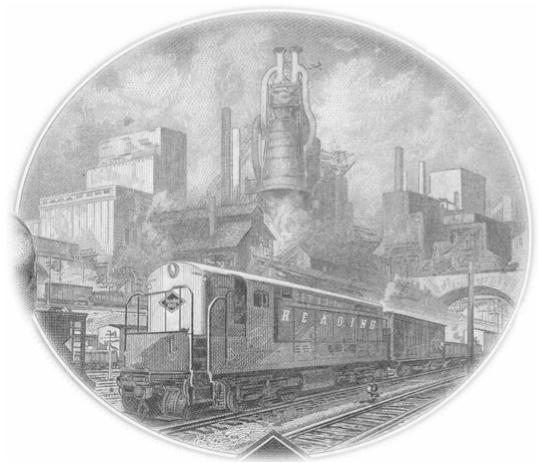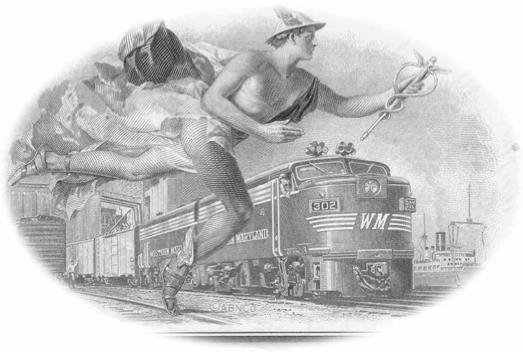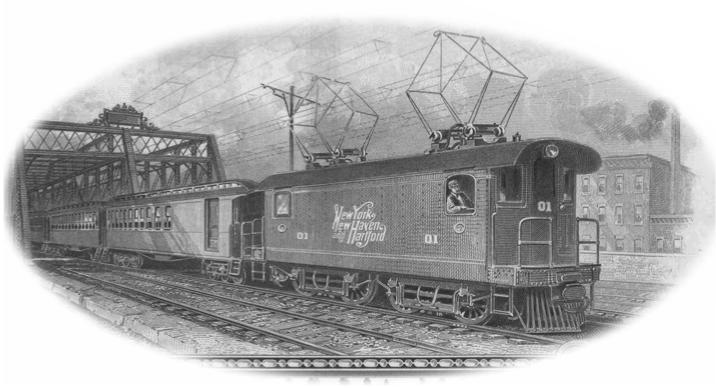
The second edition IS at the printer!
After the June newsletter, I had numerous conversations with collectors and dealers about self-publishing the second edition. Self-publishing was NOT what I wanted to do. But, everyone I talked with seemed to agree that the only reliable way to get the second edition into print was to take over publishing.
I finally made the hard decision in September. Since that time, I have spent all my free time trying to get the book to the printer by mid-November.
Finally, I can announce that the second edition really is at the printer! Pages are coming off the press and collating is already underway. Hopefully, the book will be available by the second week of December.
The book will be 1-1/8 inches thick. It contains about twice the number of certificates as the first edition. It will contain 572 pages, with photos of about 220 certificates. The retail price of the book will be $35.99.
Printing a book like this is not cheap. But, again, dealers and collectors advised that I could decrease the price of the volume by selling advertising space like BNR Press had done in the first edition.
 Image of locomotive 901 engraved by Security Banknote Company. Well-known from 1950s-era Western Pacific Railroad Co. stock certificates, this diesel was a Model FTA, 1350 horsepower machine built by Electro-Motive Corporation. It was put into service on Nov 29, 1941.
Image of locomotive 901 engraved by Security Banknote Company. Well-known from 1950s-era Western Pacific Railroad Co. stock certificates, this diesel was a Model FTA, 1350 horsepower machine built by Electro-Motive Corporation. It was put into service on Nov 29, 1941.
Again, that was NOT what I wanted to do.
But after running the numbers, and talking with several major dealers, it began to make a lot more sense.
Moreover, several collectors told me that they specifically wanted to see ads. Even with dealers listed on my web site, the collectors said they wanted to have the names and phone numbers of dealers available at their fingertips.
So, the new book will contain 26 pages of ads from 36 American and European advertisers. Even a few advanced collectors placed ads to communicate their wants to the rest of the world.
I have a hard time telling you how deeply honored I am to have the support of the collecting community. I only hope I can repay your support with a quality product.
288 New Certificates Since June
|
June
letter |
This
letter |
| Number of certificates listed (counting all variants of issued, specimens, etc.) |
18,254 |
18,452 |
| Number of distinct certificates known |
13,993 |
14,230 |
| Number of certificates with celebrity autographs |
1,419 |
1,402 |
| Number of celebrity autographs known |
321 |
317 |
| Number of railroads and railroad-related companies known |
23,742 |
23,944 |
| Number of companies for which at least one certificate is known |
5,947 |
6,091 |
So what is the next step?
 This ABNCo image appears on late-date Reading Company stock certificates. It represents an unnumbered 1400 horsepower H24-66 “Train Master” diesel built by Fairbanks-Morse sometime between 1953 and 1956. The headlight arrangement suggests the locomotive that was the subject of the engraving was probably numbered above #850. None of the existing Reading photos show this exact shape of handrail, so the artist may have modified it slightly.
This ABNCo image appears on late-date Reading Company stock certificates. It represents an unnumbered 1400 horsepower H24-66 “Train Master” diesel built by Fairbanks-Morse sometime between 1953 and 1956. The headlight arrangement suggests the locomotive that was the subject of the engraving was probably numbered above #850. None of the existing Reading photos show this exact shape of handrail, so the artist may have modified it slightly.
More of the same. I am aiming to produce the third edition in either 2005 or 2006.
That schedule will depend on the number of new certificates that emerge in the intervening time. It seems like the number of new certificates should start dropping off within that period.
New certificates are appearing all the time. Individual collectors report about half of the new discoveries. The remainder appear in auction catalogs and dealers’ lists.
I have already said it a hundred times, but I firmly believe that every collector out there has something they can contribute to this hobby. What other hobby can offer that opportunity
Scanning certificates remains a popular topic of questions
It appears that 50% to 60% of American households now own at least one computer. Estimates are undependable, but it appears that about 40% of those households now own some sort of scanning device. Based on the number of inquires I receive, it appears that many collectors are unsatisfied with their scanning results.
That is understandable. Borders and vignettes confuse scanning software. From what I have seen, most scanning software gives excellent results when scanning printed documents and photographs. Conversely, low-cost scanning software tends to be terribly confused by the fine lines found on collectible securities.
I am not qualified to lecture about the technical reasons, but I can tell you how to improve your results.
1) Turn off auto exposure. Set the exposure yourself, usually brighter than scanning software suggests. Once you figure out the best exposure, save your settings. (Even software packaged with sub-$100 scanners allows that.)
2) Turn off auto sharpening when scanning certificates with vignettes. The lower your resolution, the more crucial this suggestion. At 72 dpi, even low sharpening lowers the quality of vignettes.
3) If scanning large certificates in pieces (so you can patch together for larger images), NEVER use reduction. Always scan at full size. Always scan pieces with the same orientation. Always use at least an inch (2 cm) overlap between pieces.
4) Save disk space by saving in JPG format. If your scanner gives you bad JPG images, save as BMPs and then convert to JPG. However, if you want to resize images, or manipulate images more than once, first save as BMPs or TIFs, then convert to JPG. If saving images for publication, save as TIFs.
5) I have MANY more hints available on my web site.
 Facsimile signature of Frederic B. Whitman, president of the Western Pacific Railroad Company from July 1, 1949 to June 30, 1965.
Facsimile signature of Frederic B. Whitman, president of the Western Pacific Railroad Company from July 1, 1949 to June 30, 1965.
How to identify facsimile signatures
It may be hard to identify facsimile signatures from photos or copies, but if you have certificates in hand, it is fairly easy. Facsimile signatures generally:
- appear blacker than hand signatures
- appear very even in color
- do not show darker areas where strokes overlap
- do not soak through paper
And, of course, they are
- identical on different certificates.
Conversely, hand signatures:
- vary widely from certificate to certificate
- are brownish-black to grayish black
- show darker areas where strokes overlap
- often skip in rough areas of paper
- sometimes soak through paper
- sometimes show acidic deterioration
 American Locomotive Company delivered this particular diesel locomotive to the Western Maryland Railway in January, 1951. This was Alco model FA2, type DF-19 capable of delivering 1600 horsepower. ABNCo engraved the image for Western Maryland stock certificates.
American Locomotive Company delivered this particular diesel locomotive to the Western Maryland Railway in January, 1951. This was Alco model FA2, type DF-19 capable of delivering 1600 horsepower. ABNCo engraved the image for Western Maryland stock certificates.
When did companies first start using facsimile signatures?
By the 1950s, large companies were using facsimile signatures for their securities. However, pinpointing the exact date of switchover from earlier hand signatures is hard because this is not a widely reported feature. Here are the earliest dates of facsimile signatures I know of. Please tell me if you have certificates with facsimile signatures that are dated earlier than these.
Stock certificates
The Baltimore & Ohio Railroad Co, 1950
Chicago South Shore & South Bend Railroad, class A
preferred stock, 1929
Cleveland Cincinnati Chicago & St Louis Railway Co, 1950
Delaware Lackawanna & Western Railroad Co, 1940
Erie Railway Co, 1945
Lehigh Coal & Navigation Co, 1930
Lehigh Valley Railroad Co, 1949
The Mahoning Coal Rail Road Co, 1944
The New York Central Railroad Co, 1920
The New York & Harlem Rail Road Co, 1943
Pennsylvania Railroad Co, 1901
Seatrain Lines Inc, 1949
Bonds
As a rule, bonds were signed by hand until very late. Please contact me if you know of any bonds with facsimile signatures prior to 1950. The earliest use of a facsimile signature on a bond seems to be on certificates from.
Erie Railway Co, 1870
Certificates other than stocks and bonds
The Baltimore & Ohio Southwestern Railroad Co, preferred stock scrip, 1890
Newport News & Mississippi Valley Co, fractional stock scrip, 1886
When will the prices for collectible stocks and bonds turn around?
Conversations with dealers over the last couple of months confirms that prices are still very soft in the U.S. If anything, prices seem even softer in Germany. But how long will that last?
Based on a number of observations, I suggest that we are passing the bottom right now. It seems fairly obvious that the US stock market bottomed out in October, 2002. Currently, most indicators suggest that consumer confidence is rebounding and U.S. business is experiencing robust growth.
I suspect that average collectors will start feeling more confident by next summer. When that happens, prices ought to start creeping up for all types of collectible certificates. Unless I miss my bet, I predict that we will see the earliest price growth among high-rarity certificates.
We may be seeing stirrings of a turnaround right now.
1) It seems to me that dealers are holding firm on the prices of their better certificates. Instead of dropping prices any further, they seem willing to hold on. If nothing else, that behavior signals stability to me.
2) Prices for rarities that appear in online auctions are becoming less ridiculous. Because online auctions are buyers’ markets, prices for common items will always be low. Some prices will always be absurdly low. But, in the last couple of months, I have been surprised several times at the apparent strength of bidding in certificates that a year ago would not even have raised an eyelash.
3) No one seems to be rolling in cash right now, but none of the dealers I talked with seem to be particularly depressed about the market. And going back to a point I made at the beginning of the newsletter, I was truly surprised at the support dealers made to the new book with their advertising dollars. That tells me a lot about their confidence in the future.
 Baldwin-Westinghouse built this New Haven Class EP-1 electric locomotive for the New York New Haven & Hartford Railroad Company in 1905. This is locomotive #01, most recognizable from company bonds. Engraved by ABNCo.
Baldwin-Westinghouse built this New Haven Class EP-1 electric locomotive for the New York New Haven & Hartford Railroad Company in 1905. This is locomotive #01, most recognizable from company bonds. Engraved by ABNCo.